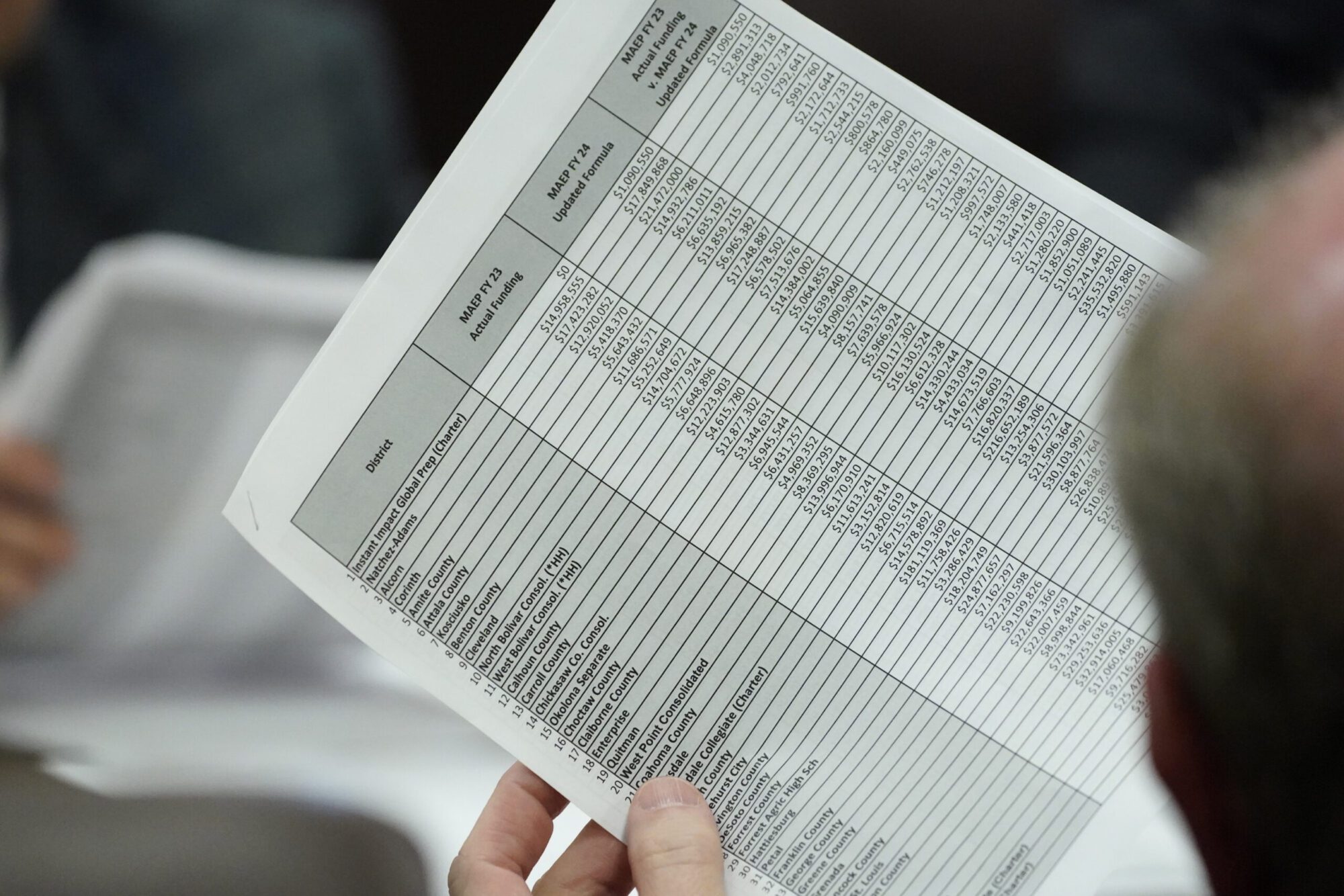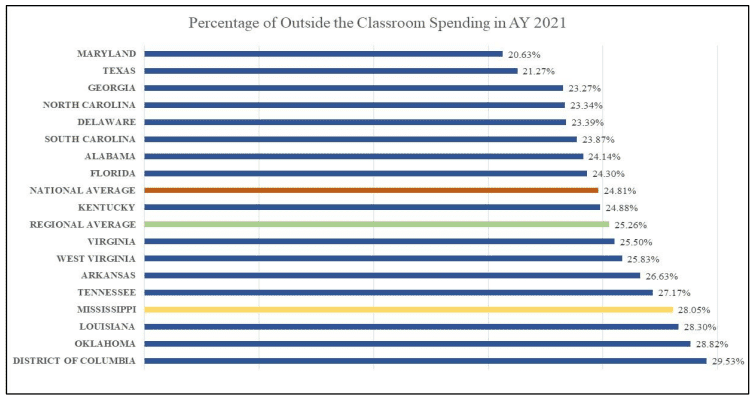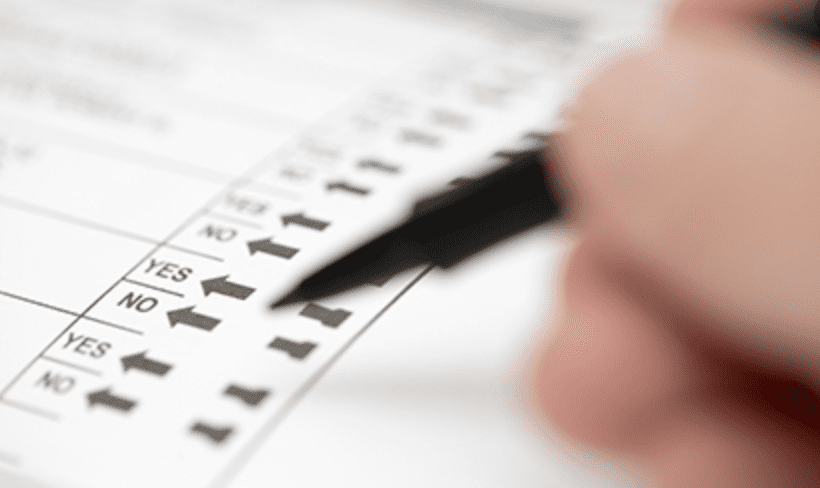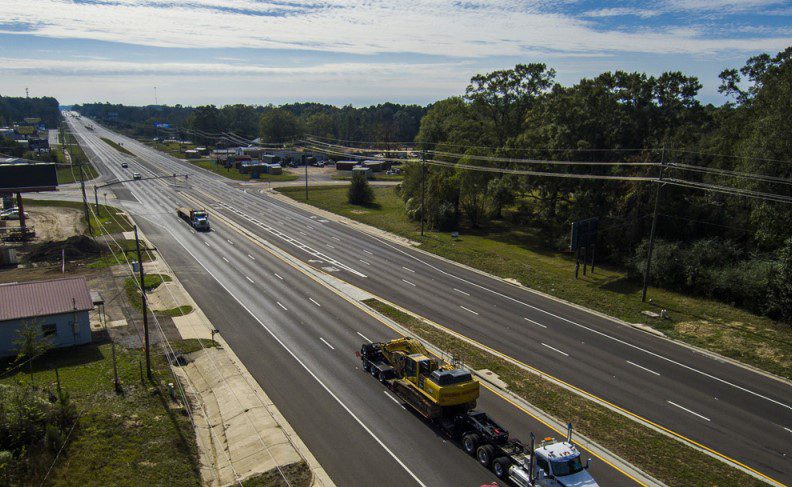
A Senate Appropriations Committee member reviews proposed legislation at the Mississippi Capitol in Jackson. (AP Photo/Rogelio V. Solis - Copyright 2023 The Associated Press. All rights reserved.)
- From 2006 to 2021, administrative spending in Mississippi grew by 6.51% while inside-the-classroom spending dropped by 7.76%.
As lawmakers continue to debate reforms to the Mississippi Adequate Education Program related to how public schools should be funded, a new report released this week from the State Auditor’s office says the Magnolia State continues to prioritize spending on administration over spending inside the classroom in its K-12 education system.
The new Auditor’s report shows that between 2006 and 2021, the number of K-12 students, using average daily attendance, dropped by approximately 60,000 in Mississippi. Yet, during that same time period, administrative spending increased, even when adjusted for inflation.
As such, administrative spending in Mississippi grew by 6.51% while inside-the-classroom spending dropped by 7.76% during that time.

The State Auditor notes that past analyses of increased outside-the-classroom or administrative spending has been the results of various causes, including inefficient procurement processes, ineffective use of technology, unneeded buildings and property, and high administrative salaries.
“This updated analysis shows Mississippi spends a greater portion of its education budget on
administration than any other state in the South. Only the District of Columbia spends a greater portion of its budget on administration,” the Auditor’s report states.
According to the Auditor’s analysis using data primarily from the National Center for Education Statistics, Mississippi administrative spending for the 2021 academic year was at 9.59% while the outside-the-classroom spending in the same year was 28.05% – “one of the highest percentages of OTC spending in the South.”

State Auditor Shad White said in a statement that Mississippi can do better for its students and teachers in the classroom.
“As the son of a 35-year public school teacher and the grandson of two public school teachers, I know it’s important to focus money on teachers’ salaries and where it matters most—the classroom,” said Auditor White. “Mississippi must do better. If we do, our students will thrive. I know it.”

The Auditor’s report states that Mississippi could invest over $144 million per year into public school classrooms by reaching the national average for percentage of education funds spent inside the classroom.
To do that, the Auditor’s office recommend that Mississippi lawmakers consider the following to curb the administrative or outside-the-classroom spending in the K-12 system:
- Require school districts that want to increase administrative spending but that are losing student population to write a clear justification that has to be approved by the State Board of Education.
- Impose penalties on school districts that are losing student population but are still increasing administrative spending, and then use those penalties to boost teacher pay.
- Cap the amount of money that shrinking school districts can spend on administrative costs at their current level.
Auditor White said at the end of the day, ensuring more funds are used in the classroom should be the goal as targeted spending inside classrooms can improve student test scores and raise teacher pay.
“Every parent knows that money spent on their child’s teacher and in their child’s classroom is what counts,” said White.











